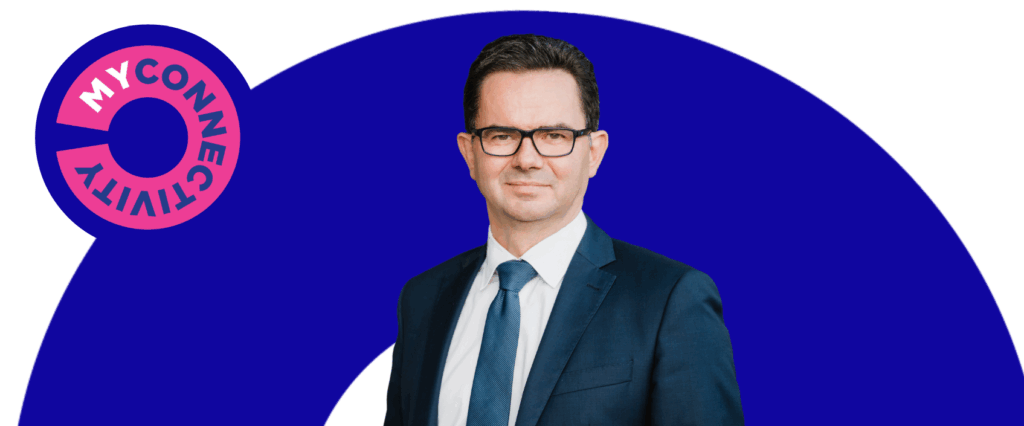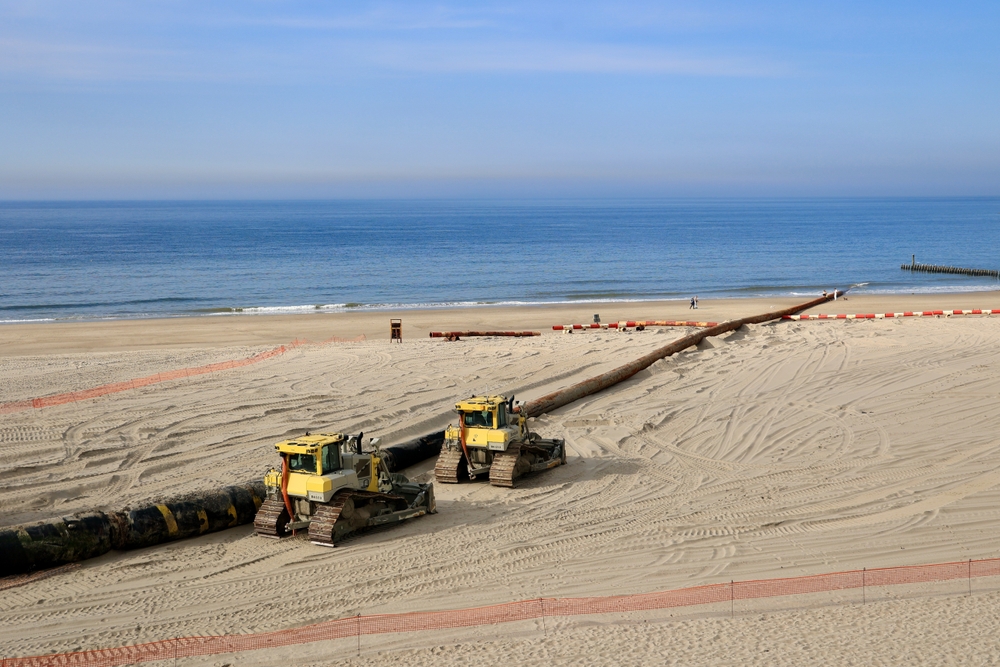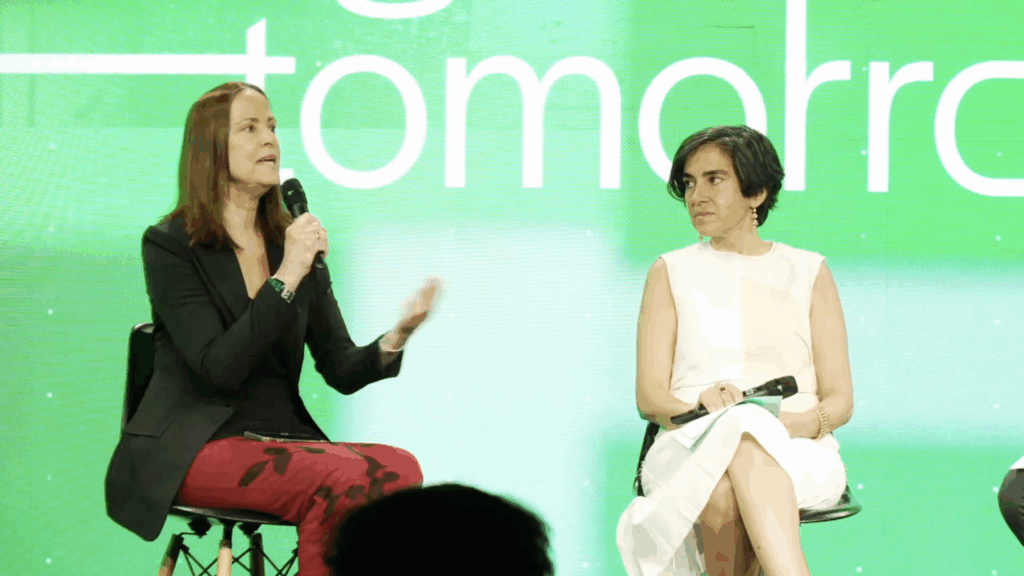
Letz make fiber happen in Luxembourg and Europe: Vincent Garnier (FTTH Council Europe) on Progress, Challenges and the Copper Switch-Off Imperative
Scroll
FTTH stands for ‘Fibre to the Home’ – and is a pan-European challenge. To promote cross-border synergies and leverage them for Luxembourg consumers and businesses, MyConnectivity has been a member of the FTTH Council Europe since early 2025.
The aim of this transnational industry organization with a total of almost 200 members in the EU and third countries is to advance ubiquitous full fibre-based connectivity to the whole of Europe, according to the motto: Making fibre happen to you.
Vincent Garnier, Director General of FTTH Council Europe, gave MyConnectivity a comprehensive overview of the current situation in Europe and Luxembourg in this context and outlined the next steps.
Scroll
What is the state of (full fibre-based) connectivity in Europe?
As of September 2024, according to the latest edition of the FTTH Market Panorama, Europe continues to make substantial progress in the deployment of full fibre connectivity. The EU39 region (including the EU27, the UK, and additional countries) has reached 269 million homes passed with Fibre to the Home/Fibre to the Building (FTTH/B), marking an increase of 25 million homes compared to the previous year. The most significant absolute growth was recorded in the United Kingdom, Germany, and Italy, with annual increases of around 25% in countries such as Greece, Finland, Germany, and the UK.
Despite this progress, a clear gap between coverage and adoption remains. The FTTH/B coverage rate in the EU39 area has risen to 74,6%, an increase of 5 percentage points over 2023, and stands at 69% for the EU27+UK. Subscriber growth has also been robust, with 143 million FTTH/B subscribers across the EU39 region by September 2024. However, with an average take-up rate of 54.5% in the EU27+UK and an average penetration rate of just 39% across Europe, adoption still lags behind network availability. Only one in four countries currently exceeds a 50% penetration rate.
The European Commission’s Digital Decade 2030 target aims for gigabit connectivity for all households and 5G coverage for all populated areas by 2030. Achieving this goal requires not only continued network expansion but also accelerated subscription growth. In this context, coordinated Copper Switch-Off strategies are recognised as critical to drive adoption, stimulate further investment, and ensure that Europe’s digital infrastructure ambitions are fully realised.
How is Luxembourg ranked in this context?
Luxembourg demonstrates one of the more advanced FTTH/B rollouts in Europe, with both coverage and adoption metrics significantly above the regional average. As of 2024, Luxembourg has reached 84,8% FTTH/B coverage, with 62,9% take-up and a penetration rate of 53,3%, according to the 2025 FTTH Market Panorama – Report by Country. These figures place Luxembourg above the EU27+UK average penetration rate of 39% and close to the average take-up rate of 54,5%, showing strong performance in both infrastructure deployment and user adoption.
A total of 267.000 homes are passed, up from 231.000 in 2023, representing a 15,6% annual growth in household coverage. Subscriber numbers rose to 168.000 in 2024, a 36,8% increase compared to the previous year. This reflects successful efforts to convert network availability into active subscriptions.
While Luxembourg’s compact geography and relatively high GDP per capita (€118.937.25) contribute to favourable deployment conditions, challenges persist. Like much of Europe, fibre rollout has focused heavily on urban centres, and bridging the rural connectivity gap remains critical to achieving full coverage.
What are current and future challenges on the way to full connectivity?
Europe’s path toward full fibre connectivity is shaped by a complex interplay of technological, regulatory, political, and investment factors.
● Technological Challenges
FTTH technology remains the most scalable, future-proof, and energy-efficient connectivity solution. However, deployment in rural and low-density areas poses significant cost challenges, with the cost per home passed being up to four times higher than in urban zones. While interim alternatives such as Fixed Wireless Access (FWA) and satellite solutions are considered in some regions, they cannot match the long-term performance, reliability, and sustainability of FTTH. Policymakers and industry leaders must maintain focus on fibre as the ultimate infrastructure to avoid deepening the digital divide.
● Regulatory Challenges
The European Electronic Communications Code (EECC) has laid strong foundations for driving fibre investment. Moving forward, regulatory stability will be critical to sustain investor confidence. Infrastructure-based competition must be preserved, complemented by targeted public support where private investment is not commercially viable, particularly in rural areas.
The Gigabit Infrastructure Act represents an important evolution of the regulatory framework. However, the most urgent regulatory priority is the coordinated Copper Switch-Off. As one of the cornerstones of our policy priorities, we consider the Copper Switch-Off as a key driver for the expansion of FTTH networks, incentivising the adoption of full-fibre broadband infrastructure. Decommissioning legacy copper networks will incentivise fibre adoption, enhance network efficiency, and strengthen the business case for continued private investment. Clear national roadmaps, aligned with EU-level objectives, will be essential to ensure a smooth transition without service disruption.
● Investment Challenges
According to State of Digital Communications report published by Connect Europe, around €120 billion has already been invested in FTTH deployments, with 57% of this investment originating from alternative operators through private capital. However, to achieve 90% FTTH coverage by 2030, an additional €120 billion will be required, with another €50 billion needed to extend coverage to 99%.
The greatest investment challenge lies in connecting rural and remote areas. Public funding mechanisms must be strategically targeted to complement private initiatives without distorting competition, ensuring efficient use of resources and maximising social impact.
Following a peak of financing activity in 2022, the fibre investment market has entered a more cautious phase, influenced by macroeconomic uncertainty and higher interest rates. Investors are increasingly focused on homes activated, not just homes passed, underscoring the need for greater emphasis on demand-side measures to convert coverage into subscriptions and sustainable cash flows.
What is, according to you, the value/added value of high-end connectivity for individuals, society, and companies?
High-speed fibre connectivity is a powerful enabler of digital inclusion. Universal access to reliable and affordable FTTH services is critical to prevent the emergence of a digital divide between urban and rural populations. Furthermore, FTTH networks contribute meaningfully to Europe’s green transition. Fibre technology is significantly more energy-efficient than copper or mobile networks, reducing emissions and supporting the EU’s sustainability goals.
Recognising FTTH as a “green asset” is gaining traction in sustainable finance. The FTTH Council Europe’s recent study highlights fibre’s lifecycle energy efficiency and positions FTTH investments within green finance frameworks, unlocking additional funding streams essential for achieving Europe’s Digital Decade ambitions.
Businesses benefit from high-end connectivity through improved productivity, access to cloud services, enhanced digital resilience, and the ability to leverage emerging technologies such as IoT, AI, and smart manufacturing. FTTH enables companies to operate more efficiently and sustainably, supporting remote work models and optimising energy consumption, thus contributing to their own ESG targets.
About Vincent Garnier
Vincent Garnier is the Director General of the FTTH Council Europe since July 2020. In this executive capacity, Vincent manages and shapes the FTTH Council’s agenda and ensures the continuous implementation of its mission to advance ubiquitous full fibre-based connectivity to the whole of Europe.


